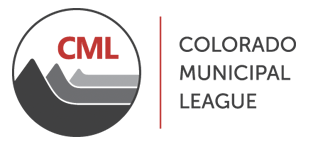Strategic Planning for a Stronger Future
In This Section
Colorado Municipalities
April 2019
By Doug Linkhart, National Civic League Executive Director

Do you roll your eyes when someone suggests doing a new strategic plan? Public planning does not have to be a tedious exercise ending in a document that sits on a shelf. Done well, it can engage community members that are not always at the table, harness new resources to solve tough challenges, and build lasting capacity for problem-solving.
The All-America City of Longmont has used communitywide planning to engage the broader public and create tangible plans with a 10-month planning effort called Focus on Longmont in 2005, an update in 2010, and Envision Longmont in 2016. The first planning process involved a 35-member steering committee and hundreds of residents, who represented more than 146 different organizations and citizen groups, and Envision Longmont directly involved 5,000 residents — in a town of only 94,000.
In Focus on Longmont, the City used a two-phase process beginning with “appreciative inquiry,” in which the City sought to understand community values and goals, followed by “deliberative dialogue,” in which trade-offs and alternative futures were considered. By conducting one-on-one interviews and focus groups in hard-to-reach communities, Longmont was able to get buy-in from people and organizations that are not always at the civic table. The resulting plans have been used to direct budget priorities and departmental goals, as well as to establish communitywide values such as appreciation of different cultures and sustainability.
Across the country, it has been harder lately to get residents involved in civic processes such as strategic planning. As Robert Putnam points out in Bowling Alone, many people are too absorbed in other pursuits, such as working two jobs, watching television, and raising families, to devote time to civic participation.
Civic engagement is critical, though, for communities to show progress on persistent challenges, such as economic opportunity, health, and public safety, sometimes called “wicked problems” because they have no easy solution and involve many trade-offs. Without the involvement of residents, businesses, and nonprofit agencies, progress on these types of issues is difficult, particularly with the limited resources of local governments.
The good news is that there are many examples of cities and towns that have established a community vision and achieved collective goals.
San Antonio, another All-America City, undertook a communitywide visioning process called SA2020 in 2010 under the leadership of Mayor Julian Castro. Through a series of public meetings, online chat sessions, and surveys, San Antonians shaped a shared vision for their community by the year 2020.
Nearly 6,000 residents, representing a diverse cross-section of San Antonio, were tasked with developing a framework, defining community results, and identifying measures of success. Now, nearly 10 years later, progress is being made on most of the 61 indicators developed through the process, with 70 percent trending better today than they were in 2010, including increasing high school graduation rates, raising per capita income, improving health care access, decreasing teen birth rates, and decreasing the diabetes rate.
In a smaller-town example, the National Civic League conducted a visioning process for the Kansas City suburb of Gladstone, Missouri, which in the early part of the century was experiencing an aging population, declining revenues, a stagnant business environment, and inadequate municipal services. More than 150 residents participated in Gladstone on the Move, which resulted in its first-ever property tax increase and the extension of a sales tax that was about to expire to pay for parks and recreation needs. Gladstone on the Move was also the catalyst to build the Gladstone Community Center, more fully develop a downtown, and start a new Leadership Academy.
What makes some strategic planning efforts successful in gaining broad participation and producing results, while others languish? Here are some key ingredients.
Community Ownership Is Essential
Communitywide planning efforts should be aimed at determining what people want to see in the municipality, not what people want to see from the municipality. If, for example, a community goal is better public safety, the question for a community plan should be how to work together to create public safety, not what do residents want law enforcement to do. This is why it is important to have key groups at the initial planning sessions, such as business associations, homeowners groups, nonprofit agencies, faith-based institutions, and ethnic groups.
One of the most important steps in communitywide planning is broad outreach to engage every part of the community. It can be a struggle to gain the involvement of parts of the community that are often under-represented, such as youth, low-income populations, and immigrants, yet these populations are often the subject of many plan objectives. These objectives will certainly be better targeted and more successful with the involvement of these populations.
Not every source of input needs to contribute in the same form. For many community members, attending lengthy deliberations is not desirable or realistic. Cities and towns are finding many creative techniques for accommodating different types of input, from the “Tamales and Talk” meals in Longmont to the “Take Ten” interviews on the street by city employees in Charlotte, North Carolina. Clipboards at festivals, online portals with survey questions, and art contests can all play a role in gathering input in ways that are most amenable to a variety of populations.
Plan Outcomes Should Be Measurable, Implemented, and Tracked
Outcomes should be specifically defined and measurable, with clear ideas of the manner in which they will be achieved and responsibilities assigned. Goals should be set in a context that considers past work and the ability of key players to deliver on commitments.
A committee of the overall group should be tasked with oversight and staff members assigned with responsibility for collecting and reporting progress. There should be a specific timeline for review, whether it be quarterly, annually, or every five years. In San Antonio, a nonprofit agency was formed to oversee implementation and tracking. In Longmont, a plan review was scheduled five years out, with tracking steps in between.
Leave Stronger Than When You Began
One of the oft-neglected yet most powerful outcomes of communitywide planning is the opportunity for capacity building. By opening input and decision-making on key challenges to the full community, a city or town can create relationships among members of the community for solving problems for years to come.
The National Civic League (NCL) calls this problem-solving capacity civic capital, the formal and informal
relationships, networks, and capacities communities use to make decisions and solve problems. The components of civic capital, as described in NCL’s Civic Index, include inclusive community leadership, collaborative institutions, a culture of engagement, and other factors that relate to different parts of a community.
The act of collectively identifying a community vision, outlining goals and objectives, and implementing activities to achieve these measures is a perfect opportunity for creating communitywide ownership of public issues and ongoing relationships for addressing future challenges. These relationships should be intentional, with advisory structures and communications mechanisms left in place that are open, inclusive, and respectful of each actor’s role in helping to foster community change.
The NCL’s Civic Index is available at www.ncl.org. NCL also has published a Community Visioning and Decision-Making Handbook with step-by-step guidance on communitywide planning processes; contact NCL for a free copy or for other resources and advice on how to harness the full power of your community.
